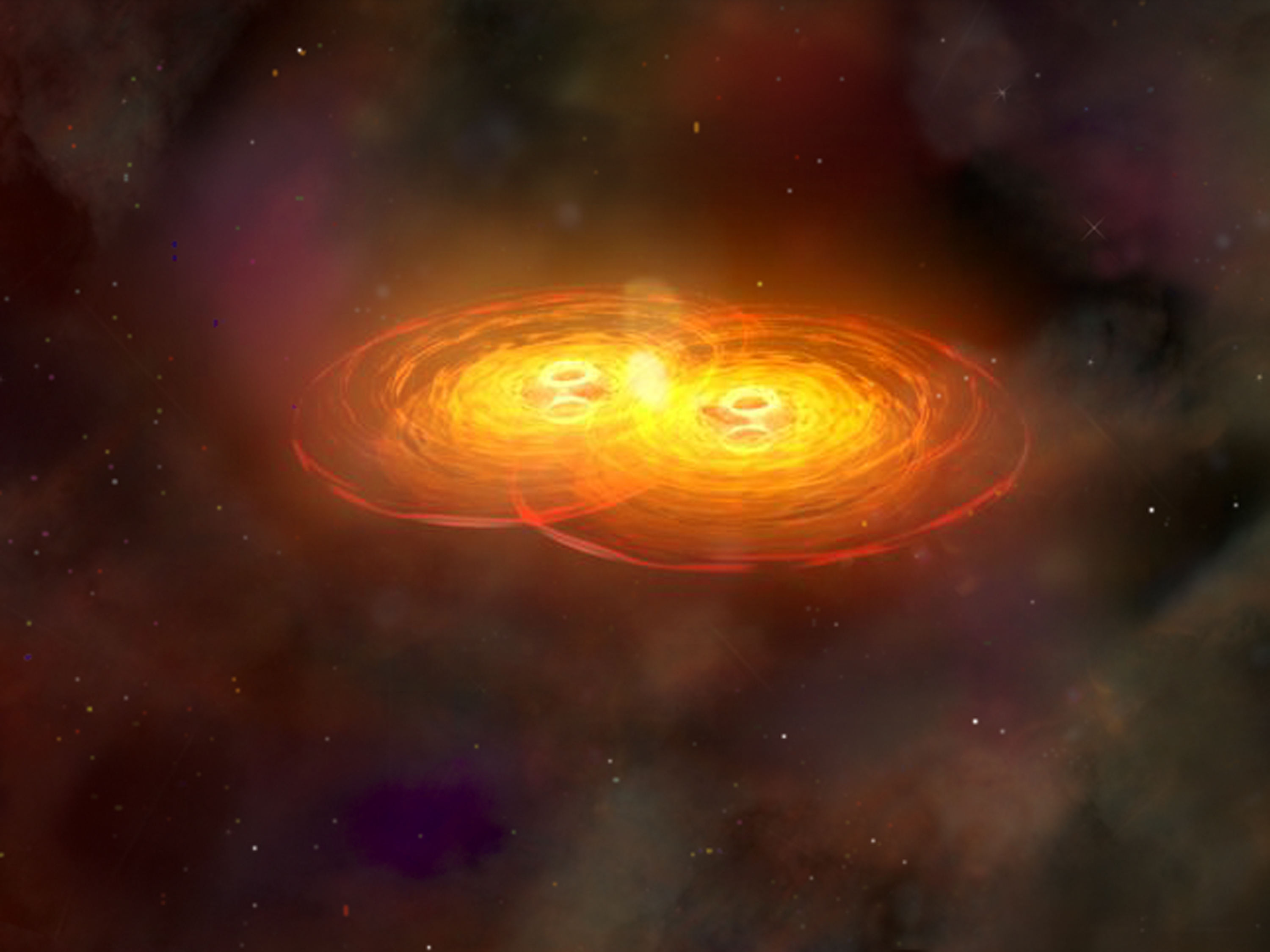|
Twisted Geometries
Twisted geometries are discrete geometries that play a role in loop quantum gravity and spin foam models, where they appear in the semiclassical limit of spin networks. A twisted geometry can be visualized as collections of polyhedra dual to the nodes of the spin network's graph. Intrinsic and extrinsic curvatures are defined in a manner similar to Regge calculus, but with the generalisation of including a certain type of metric discontinuities: the face shared by two adjacent polyhedra has a unique area, but its shape can be different. This is a consequence of the quantum geometry of spin networks: ordinary Regge calculus is "too rigid" to account for all the geometric degrees of freedom described by the semiclassical limit of a spin network. The name twisted geometry captures the relation between these additional degrees of freedom and the off-shell presence of torsion in the theory, but also the fact that this classical description can be derived from twistor theory In theor ... [...More Info...] [...Related Items...] OR: [Wikipedia] [Google] [Baidu] |
Loop Quantum Gravity
Loop quantum gravity (LQG) is a theory of quantum gravity that incorporates matter of the Standard Model into the framework established for the intrinsic quantum gravity case. It is an attempt to develop a quantum theory of gravity based directly on Albert Einstein's geometric formulation rather than the treatment of gravity as a mysterious mechanism (force). As a theory, LQG postulates that the structure of space and time is composed of finite loops woven into an extremely fine fabric or network. These networks of loops are called spin networks. The evolution of a spin network, or spin foam, has a scale on the order of a Planck length, approximately 10−35 meters, and smaller scales are meaningless. Consequently, not just matter, but space itself, prefers an atomic structure. The areas of research, which involve about 30 research groups worldwide, share the basic physical assumptions and the mathematical description of quantum space. Research has evolved in two directions ... [...More Info...] [...Related Items...] OR: [Wikipedia] [Google] [Baidu] |
Spin Networks
In physics, a spin network is a type of diagram which can be used to represent states and interactions between particles and fields in quantum mechanics. From a mathematical perspective, the diagrams are a concise way to represent multilinear functions and functions between representations of matrix groups. The diagrammatic notation can thus greatly simplify calculations. Roger Penrose described spin networks in 1971. Spin networks have since been applied to the theory of quantum gravity by Carlo Rovelli, Lee Smolin, Jorge Pullin, Rodolfo Gambini and others. Spin networks can also be used to construct a particular functional on the space of connections which is invariant under local gauge transformations. Definition Penrose's definition A spin network, as described in Penrose (1971),R. Penrose (1971a), "Angular momentum: an approach to combinatorial spacetime," in T. Bastin (ed.), ''Quantum Theory and Beyond'', Cambridge University Press (this paper can be found onlin ... [...More Info...] [...Related Items...] OR: [Wikipedia] [Google] [Baidu] |
Regge Calculus
In general relativity, Regge calculus is a formalism for producing simplicial approximations of spacetimes that are solutions to the Einstein field equation. The calculus was introduced by the Italian theoretician Tullio Regge in 1961. Available (subscribers only) aIl Nuovo Cimento/ref> Overview The starting point for Regge's work is the fact that every four dimensional time orientable Lorentzian manifold admits a triangulation into simplices. Furthermore, the spacetime curvature can be expressed in terms of deficit angles associated with ''2-faces'' where arrangements of ''4-simplices'' meet. These 2-faces play the same role as the vertices where arrangements of ''triangles'' meet in a triangulation of a ''2-manifold'', which is easier to visualize. Here a vertex with a positive angular deficit represents a concentration of ''positive'' Gaussian curvature, whereas a vertex with a negative angular deficit represents a concentration of ''negative'' Gaussian curvature. The d ... [...More Info...] [...Related Items...] OR: [Wikipedia] [Google] [Baidu] |
Twistor Theory
In theoretical physics, twistor theory was proposed by Roger Penrose in 1967 as a possible path to quantum gravity and has evolved into a widely studied branch of theoretical and mathematical physics. Penrose's idea was that twistor space should be the basic arena for physics from which space-time itself should emerge. It has led to powerful mathematical tools that have applications to differential and integral geometry, nonlinear differential equations and representation theory, and in physics to general relativity, quantum field theory, and the theory of scattering amplitudes. Twistor theory arose in the context of the rapidly expanding mathematical developments in Einstein's theory of general relativity in the late 1950s and in the 1960s and carries a number of influences from that period. In particular, Roger Penrose has credited Ivor Robinson as an important early influence in the development of twistor theory, through his construction of so-called ''Robinson congruences ... [...More Info...] [...Related Items...] OR: [Wikipedia] [Google] [Baidu] |
Loop Quantum Gravity
Loop quantum gravity (LQG) is a theory of quantum gravity that incorporates matter of the Standard Model into the framework established for the intrinsic quantum gravity case. It is an attempt to develop a quantum theory of gravity based directly on Albert Einstein's geometric formulation rather than the treatment of gravity as a mysterious mechanism (force). As a theory, LQG postulates that the structure of space and time is composed of finite loops woven into an extremely fine fabric or network. These networks of loops are called spin networks. The evolution of a spin network, or spin foam, has a scale on the order of a Planck length, approximately 10−35 meters, and smaller scales are meaningless. Consequently, not just matter, but space itself, prefers an atomic structure. The areas of research, which involve about 30 research groups worldwide, share the basic physical assumptions and the mathematical description of quantum space. Research has evolved in two directions ... [...More Info...] [...Related Items...] OR: [Wikipedia] [Google] [Baidu] |
